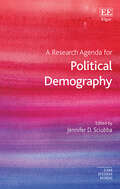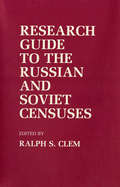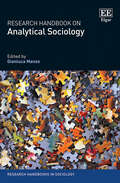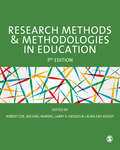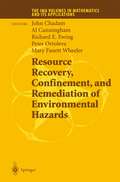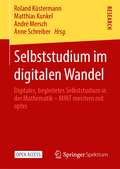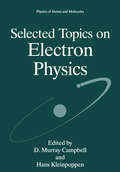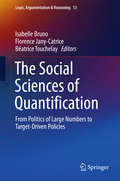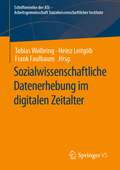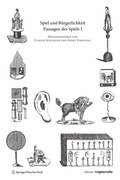- Table View
- List View
Reflection
This diagram shows a triangle reflected on two different mirror lines. A locator dot and title are shown. These must always be at the top left of the page when the image is the right way up. There is a graph with all four quadrants showing, and the x and y axes ranging from -3 to 3. The x and the y axis intersect at the origin O. Positive values are to the right and to the top of the diagram. Negative values are to the left and to the bottom of the diagram. Not all axis division marks are labelled. Some of the braille uses maths code notation. When a shape is reflected it is the same shape but turned over into a new position. The original triangle 1 is in the top left quadrant. Triangle 2 to the right is a reflection in the y-axis. The mirror line is represented by a heavy dashed line which has replaced the normal y axis line in the top part of the diagram. Triangle 3 in the bottom right quadrant, is a reflection in the y = x-axis. This mirror line is also shown as a heavy dashed line. Note the two mirror lines would normally go from one edge of the graph to the other, in this diagram the mirror lines have been shortened to prevent tactile confusion.
Reflection
This diagram shows a triangle reflected on two different mirror lines. A locator dot and title are shown. These must always be at the top left of the page when the image is the right way up. There is a graph with all four quadrants showing, and the x and y axes ranging from -3 to 3. The x and the y axis intersect at the origin O. Positive values are to the right and to the top of the diagram. Negative values are to the left and to the bottom of the diagram. Not all axis division marks are labelled. Some of the braille uses maths code notation. When a shape is reflected it is the same shape but turned over into a new position. The original triangle 1 is in the top left quadrant. Triangle 2 to the right is a reflection in the y-axis. The mirror line is represented by a heavy dashed line which has replaced the normal y axis line in the top part of the diagram. Triangle 3 in the bottom right quadrant, is a reflection in the y = x-axis. This mirror line is also shown as a heavy dashed line. Note the two mirror lines would normally go from one edge of the graph to the other, in this diagram the mirror lines have been shortened to prevent tactile confusion.
Reflection
This diagram shows a triangle reflected on two different mirror lines. A locator dot and title are shown. These must always be at the top left of the page when the image is the right way up. There is a graph with all four quadrants showing, and the x and y axes ranging from -3 to 3. The x and the y axis intersect at the origin O. Positive values are to the right and to the top of the diagram. Negative values are to the left and to the bottom of the diagram. Not all axis division marks are labelled. Some of the braille uses maths code notation. When a shape is reflected it is the same shape but turned over into a new position. The original triangle 1 is in the top left quadrant. Triangle 2 to the right is a reflection in the y-axis. The mirror line is represented by a heavy dashed line which has replaced the normal y axis line in the top part of the diagram. Triangle 3 in the bottom right quadrant, is a reflection in the y = x-axis. This mirror line is also shown as a heavy dashed line. Note the two mirror lines would normally go from one edge of the graph to the other, in this diagram the mirror lines have been shortened to prevent tactile confusion.
A Research Agenda for Political Demography (Elgar Research Agendas)
Elgar Research Agendas outline the future of research in a given area. Leading scholars are given the space to explore their subject in provocative ways, and map out the potential directions of travel. They are relevant but also visionary.Exploring how demographic dynamism continues to shape the character of societies, this forward-looking Research Agenda offers insights into how the human population has undergone fundamental demographic shifts, and the impact these have had on how we organize ourselves politically, the design of our economic systems, and even our societal relationships.The Research Agenda first introduces readers to the foundations of demographic change: fertility, mortality and migration. Chapters examine the political impact of forced migration, urbanization, gender dynamics, the intersection of race, identity and electoral politics, religious and ethnic groups, and health. The implications of the geographic shift in population centres from the Global North to the Global South are also highlighted, as well as the relationship between demography on the one hand and political and economic power on the other.This will be an invigorating read for social science scholars looking to develop their research or interact with current research trends, particularly scholars of human geography, development studies and geopolitics.
Research Guide to the Russian and Soviet Censuses (Studies in Soviet History and Society)
Taken together, the Russian census of 1897 and the Soviet censuses of 1926, 1959, 1970, and 1979 constitute the largest collection of empirical data available on that country, but until the publication of this book in 1986, the daunting complexity of that material prevented Western scholars from exploiting the censuses fully. This book is both a guide to the use of and a detailed index to these censuses. The first part of the book consists of eight essays by specialist on the USSR, six of them dealing with the use of census materials and the availability of data for research on ethnicity and language, marriage and the family, education and literacy, migration and organization, age structure, and occupations. The second part, a comprehensive index for all the published census, presents more than six hundred annotated entries for the census tables, a keyword index that enables researchers to find census data by subject, and a list of political-administrative units covered in each census.
Research Handbook on Analytical Sociology (Research Handbooks in Sociology series)
Providing an up-to-date portrait of the concepts and methods of analytical sociology, this pivotal Research Handbook traces the historical evolution of the field, utilising key research examples to illustrate its core principles. It investigates how analytical sociology engages with other approaches such as analytical philosophy, structural individualism, social stratification research, complexity science, pragmatism, and critical realism, exploring the foundations of the field as well as its major explanatory mechanisms and methods.Chapters examine the ways in which analytical sociology addresses crucial concepts, including norms, structures, context, contingency, action theory, and models of social interactions. Offering an in-depth analysis of cumulative advantage, complex contagions, and network amplification, this comprehensive Research Handbook discusses the range of data sources and methods available to analytical sociologists for empirical research, in particular digital traces, historical archives, game-theoretic models, causal inference techniques, social networks analysis, and agent-based simulations.Creating a new synthesis of the theoretical and methodological resources required to carry out research using analytical sociology tools, the Research Handbook will be a key pedagogical resource for students and scholars of sociology and sociological theory, research methods, demography, social psychology, economics, and computer science.
Research Methods and Methodologies in Education
Your #1 resource for carrying out educational research as part of postgraduate study. High-quality educational research requires careful consideration of every aspect of the process. This all-encompassing textbook written by leading international experts gives you considered overview of principles that underpin research, and key qualitative, quantitative and mixed methods for research design, data collection and analysis. This third edition includes four new chapters: Disseminating your research Data science and computational research methods Observational methods Analysis of variance (ANOVA) Plus a new Research essentials feature that highlights key ‘must-haves’ or misconceptions relating to each methodological approach, research design or analytical tool discussed. This is essential reading for postgraduate students on education courses and early career researchers looking to sharpen their research practice.
Resource Recovery, Confinement, and Remediation of Environmental Hazards (The IMA Volumes in Mathematics and its Applications #131)
This IMA Volume in Mathematics and its Applications RESOURCE RECOVERY, CONFINEMENT, AND REMEDIATION OF ENVIRONMENTAL HAZARDS contains papers presented at two successful one-week workshops: Confine ment and Remediation of Environmental Hazards held on January 15-19, 2000 and Resource Recovery, February 9-13, 2000. Both workshops were integral parts of the IMA annual program on Mathematics in Reactive Flow and Transport Phenomena, 1999-2000. We would like to thank John Chadam (University of Pittsburgh), Al Cunningham (Montana State Uni versity), Richard E. Ewing (Texas A&M University), Peter Ortoleva (In diana University), and Mary Fanett Wheeler (TICAM, The University of Texas at Austin) for their excellent work as organizers of the meetings and for editing the proceedings. We take this opportunity to thank the National Science Foundation for their support of the IMA. Series Editors Douglas N. Arnold, Director of the IMA Fadil Santosa, Deputy Director of the IMA v PREFACE Advances in resource recovery, and confinement/remediation of envi ronmental hazards requires a coordinated, interdisciplinary effort involving mathematicians, scientists and engineers. The intent of this collection of papers is to summarize recent theoretical, computational, and experimen tal advances in the theory of phenomena in porous media, with the intent to identify similarities and differences concerning applications related to both resource recovery and confinement and remediation of environmental hazards.
Rotation
This diagram shows three triangles; the original triangle and its rotation in two different directions to two new positions. A locator dot and title are shown. These must always be at the top left of the page when the image is the right way up. There is a graph with all four quadrants showing, and the x and y axes ranging from -3 to 3. The x and the y axes intersect at the origin marked by an X. Axes values are positive to the right and to the top of the diagram. Axes values are negative to the left and to the bottom of the diagram. Not all axis division marks are labelled. Some of the braille uses maths code notation. When an object is rotated it stays the same shape but its position and orientation change. The original triangle is in the top left quadrant. The triangle rotated 90? clockwise is to the right. The triangle rotated 180? anticlockwise is shown in the bottom right quadrant. Their path of movement is indicated by curved heavy dashed arc lines. Note the 90? arc in the top right quadrant is broken in the tactile version of the graph to allow a braille label to be clearly read.
Rotation
This diagram shows three triangles; the original triangle and its rotation in two different directions to two new positions. A locator dot and title are shown. These must always be at the top left of the page when the image is the right way up. There is a graph with all four quadrants showing, and the x and y axes ranging from -3 to 3. The x and the y axes intersect at the origin marked by an X. Axes values are positive to the right and to the top of the diagram. Axes values are negative to the left and to the bottom of the diagram. Not all axis division marks are labelled. Some of the braille uses maths code notation. When an object is rotated it stays the same shape but its position and orientation change. The original triangle is in the top left quadrant. The triangle rotated 90? clockwise is to the right. The triangle rotated 180? anticlockwise is shown in the bottom right quadrant. Their path of movement is indicated by curved heavy dashed arc lines. Note the 90? arc in the top right quadrant is broken in the tactile version of the graph to allow a braille label to be clearly read.
Rotation
This diagram shows three triangles; the original triangle and its rotation in two different directions to two new positions. A locator dot and title are shown. These must always be at the top left of the page when the image is the right way up. There is a graph with all four quadrants showing, and the x and y axes ranging from -3 to 3. The x and the y axes intersect at the origin marked by an X. Axes values are positive to the right and to the top of the diagram. Axes values are negative to the left and to the bottom of the diagram. Not all axis division marks are labelled. Some of the braille uses maths code notation. When an object is rotated it stays the same shape but its position and orientation change. The original triangle is in the top left quadrant. The triangle rotated 90? clockwise is to the right. The triangle rotated 180? anticlockwise is shown in the bottom right quadrant. Their path of movement is indicated by curved heavy dashed arc lines. Note the 90? arc in the top right quadrant is broken in the tactile version of the graph to allow a braille label to be clearly read.
The Science of Bradley Efron: Selected Papers (Springer Series in Statistics)
Nature didn’t design human beings to be statisticians, and in fact our minds are more naturally attuned to spotting the saber-toothed tiger than seeing the jungle he springs from. Yet scienti?c discovery in practice is often more jungle than tiger. Those of us who devote our scienti?c lives to the deep and satisfying subject of statistical inference usually do so in the face of a certain under-appreciation from the public, and also (though less so these days) from the wider scienti?c world. With this in mind, it feels very nice to be over-appreciated for a while, even at the expense of weathering a 70th birthday. (Are we certain that some terrible chronological error hasn’t been made?) Carl Morris and Rob Tibshirani, the two colleagues I’ve worked most closely with, both ?t my ideal pro?le of the statistician as a mathematical scientist working seamlessly across wide areas of theory and application. They seem to have chosen the papers here in the same catholic spirit, and then cajoled an all-star cast of statistical savants to comment on them.
Search Theory: Some Recent Developments
On the solution of an optimal search problem with an exponential detection function. Covers one- and two-sided detection problems by furnishing continuous and discret time strategies; examines two-sided search strategies with solutions in hide and seek games in many discrete and continuous bounded
Selbststudium im digitalen Wandel: Digitales, begleitetes Selbststudium in der Mathematik – MINT meistern mit optes
Selbststudium ist ein wichtiges Element im Zuge der Digitalisierungsbestrebungen an Hochschulen. Das Projekt optes widmet sich dem digitalen, begleiteten Selbststudium im Fach Mathematik. Es bietet mit seinen webbasierten Angeboten die Möglichkeit, das Selbstlernen in der Studienvorbereitung zu unterstützen, um so die Abbruchquoten in MINT-Fächern zu reduzieren. Neben dem Studienvorbereitungsprogramm und Assessment-Tools in der Mathematik im Lernmanagementsystem ILIAS wurden in optes diverse Materialien zur Lernprozessbegleitung entwickelt, inklusive adaptiver Lernempfehlungen, diagnostischer Testverfahren zur Prüfung des Wissensstandes (vor und während des Studiums), Selbstreflexionstools und überfachlicher Lernmodule sowie persönliche E-Mentoring- und E-Tutoring-Programme. Der vorliegende Open-Access-Sammelband stellt die wissenschaftlichen Erkenntnisse und praktischen Umsetzungen aus dem Projektkontext von optes dar.
Selected Topics on Electron Physics (Physics of Atoms and Molecules)
In the spring of 1970 Peter Farago organised a three-day conference on Polarised Electron Beams at Carberry Tower, near Edinburgh. Although the development of the gallium arsenide source, which was to revolutionise the world of experimental polarised electron physics, was still some years in the future, the meeting provided an important forum for the exchange of ideas among theoreticians and experimentalists engaged in both high and low energy electron collision studies. As soon as the decision had been taken to hold the 5th European Conference on Atomic and Molecular Physics in Edinburgh in 1995, it occurred to the editors of the present volume that it would be highly appropriate to mark the twenty-fifth anniversary of the Carberry Tower Conference by organising an ECAMP satellite meeting in honour of Peter Farago. The opportunity to pay tribute to Peter's many important contributions in the broad field of electron physics attracted colleagues from allover the world to the symposium, which was held in the rooms of the Royal Society of Edinburgh on 31st March and 1st April 1995. Peter himself, now Professor Emeritus at the University of Edinburgh, was present throughout the meeting. We were particularly happy to welcome back to Edinburgh many participants in the original Carberry Tower conference; these included Professor P. G. Burke, Professor J. Kessler, Professor E. Reichert and Professor H. C. Siegmann, whose review papers had been highlights of the 1970 meeting.
Semigroup Theory and Evolution Equations: The Second International Conference
Proceedings of the Second International Conference on Trends in Semigroup Theory and Evolution Equations held Sept. 1989, Delft University of Technology, the Netherlands. Papers deal with recent developments in semigroup theory (e.g., positive, dual, integrated), and nonlinear evolution equations (e
Similarity
This diagram consists of two pairs of similar shapes; the two in the middle of the page are similar and the bottom two are also similar. A locator dot and title are shown. These must always be at the top left of the page when the image is the right way up. Similarity is a type of enlargement. The corresponding sides are in the same ratio - the ratio is the scale factor of the enlargement.
Similarity
This diagram consists of two pairs of similar shapes; the two in the middle of the page are similar and the bottom two are also similar. A locator dot and title are shown. These must always be at the top left of the page when the image is the right way up. Similarity is a type of enlargement. The corresponding sides are in the same ratio - the ratio is the scale factor of the enlargement.
Similarity
This diagram consists of two pairs of similar shapes; the two in the middle of the page are similar and the bottom two are also similar. A locator dot and title are shown. These must always be at the top left of the page when the image is the right way up. Similarity is a type of enlargement. The corresponding sides are in the same ratio - the ratio is the scale factor of the enlargement.
Smittestopp − A Case Study on Digital Contact Tracing (Simula SpringerBriefs on Computing #11)
This open access book describes Smittestopp, the first Norwegian system for digital contact tracing of Covid-19 infections, which was developed in March and early April 2020. The system was deployed after five weeks of development and was active for a little more than two months, when a drop in infection levels in Norway and privacy concerns led to shutting it down. The intention of this book is twofold. First, it reports on the design choices made in the development phase. Second, as one of the only systems in the world that collected population data into a central database and which was used for an entire population, we can share experience on how the design choices impacted the system's operation. By sharing lessons learned and the challenges faced during the development and deployment of the technology, we hope that this book can be a valuable guide for experts from different domains, such as big data collection and analysis, application development, and deployment in a national population, as well as digital tracing.
The Social Sciences of Quantification: From Politics of Large Numbers to Target-Driven Policies (Logic, Argumentation & Reasoning #13)
This book details how quantification can serve both as evidence and as an instrument of government, whether when dealing with statistics on employment, occupational health and economic governance, or when developing public management or target-driven policies. In the process, it presents a thought-provoking homage to Alain Desrosières, who pioneered ways to study large numbers and the politics underlying them.It opens with a summary of Desrosières's contributions to the field in which several generations of researchers detail how this statistician and historian profoundly influenced them. This tribute, based on personal testimonies, bears witness to the vitality of the school of thought and analytical framework Desrosières initiated. Next, a collection of essays explores the statistical argument in the neoliberal era, examining issues such as counting the homeless in Europe, measuring the performance of public services, and quantifying the effects of public action on the unemployed in France.The third part details the uses of quantification. It reveals that although statistics are frequently used to the advantage of those in power, they can also play a vital role in challenging and resisting both the conventions underlying the measurements as well as the measurements themselves.Featuring the work of economists, historians, political scientists, sociologists, and statisticians, this title provides readers with a thoughtful look at an influential figure in the history of statistics. It also shows how statistics are used to direct public policy, the degree of conflict that is possible in their production, and the disputes that can develop around their uses.
Sozialwissenschaftliche Datenerhebung im digitalen Zeitalter (Schriftenreihe der ASI - Arbeitsgemeinschaft Sozialwissenschaftlicher Institute)
Neue Möglichkeiten der Datenerhebung mittels digitaler Technologien, aber auch die Verfügbarkeit prozessproduzierter Daten, die bei der Nutzung sozialer Medien, Smartphones oder sogenannter Wearables anfallen, bergen ein enormes Potenzial für die empirische Sozialforschung. Es erscheint vor diesem Hintergrund nicht übertrieben von einer digitalen Revolution in den Sozialwissenschaften zu sprechen, welche die empirische Sozialforschung mit neuen Herausforderungen und Fragestellungen konfrontiert. Der vorliegende Sammelband widmet sich diesem Themenkomplex mit überblicksartigen Beiträgen, Untersuchungen zur Datenqualität und praxisnahen Anwendungsbeispielen.
Special Functions in Fractional Calculus and Engineering (Mathematics and its Applications)
Special functions play a very important role in solving various families of ordinary and partial differential equations as well as their fractional-order analogs, which model real-life situations. Owing to the non-local nature and memory effect, fractional calculus is capable of modeling many situations which arise in engineering. This book includes a collection of related topics associated with such equations and their relevance and significance in engineering. Special Functions in Fractional Calculus and Engineering highlights the significance and applicability of special functions in solving fractional-order differential equations with engineering applications. This book focuses on the non-local nature and memory effect of fractional calculus in modeling relevant to engineering science and covers a variety of important and useful methods using special functions for solving various types of fractional-order models relevant to engineering science. This book goes on to illustrate the applicability and usefulness of special functions by justifying their numerous and widespread occurrences in the solution of fractional-order differential, integral, and integrodifferential equations.This book holds a wide variety of interconnected fundamental and advanced topics with interdisciplinary applications that combine applied mathematics and engineering sciences, which are useful to graduate students, Ph.D. scholars, researchers, and educators interested in special functions, fractional calculus, mathematical modeling, and engineering.
Spiel und Bürgerlichkeit: Passagen des Spiels I (Edition Angewandte)
Spiele verändern sich. Sie sind der Wunsch- und Zerrspiegel jeder Gesellschaft, die sie spielt. In der Kultur der Bürgerlichkeit geraten viele Spiele in eine „Zone wachsamer Aufmerksamkeit" (D. Kühme) und sind einem vielgestaltigen kulturellen Transformationsprozess unterworfen: Spiele werden missliebig oder verboten, sie werden lehrreich und schön, ihre Obszönität wird domestiziert oder ihr Betrieb verstaatlicht."Spiel und Bürgerlichkeit" ist den Veränderungen in der Grammatik und Semantik der Spiele gewidmet. Die Beiträge reichen von Cardanos Theorie des Glücksspiels in der frühen Neuzeit, den Karten-, Brett- und Gesellschaftsspiele im Bürgertum, dem Aufstieg und dem Verschwinden der Lotterien, über die Betrachtung der Geschlechterrollen im Spiel und der Funktion von Spielervereinigungen bis zur Analyse der Topografie und Architektur der Kasinos am Mississippi zu Zeiten Mark Twains.Ergänzt wird das Werk durch eine ausführliche Bild- und Lesestrecke, die Einschau ins Archiv der bürgerlichen Spiele nimmt und seltene Bilder und Textauszüge aus Spielebüchern und -traktaten der Zeit präsentiert.

